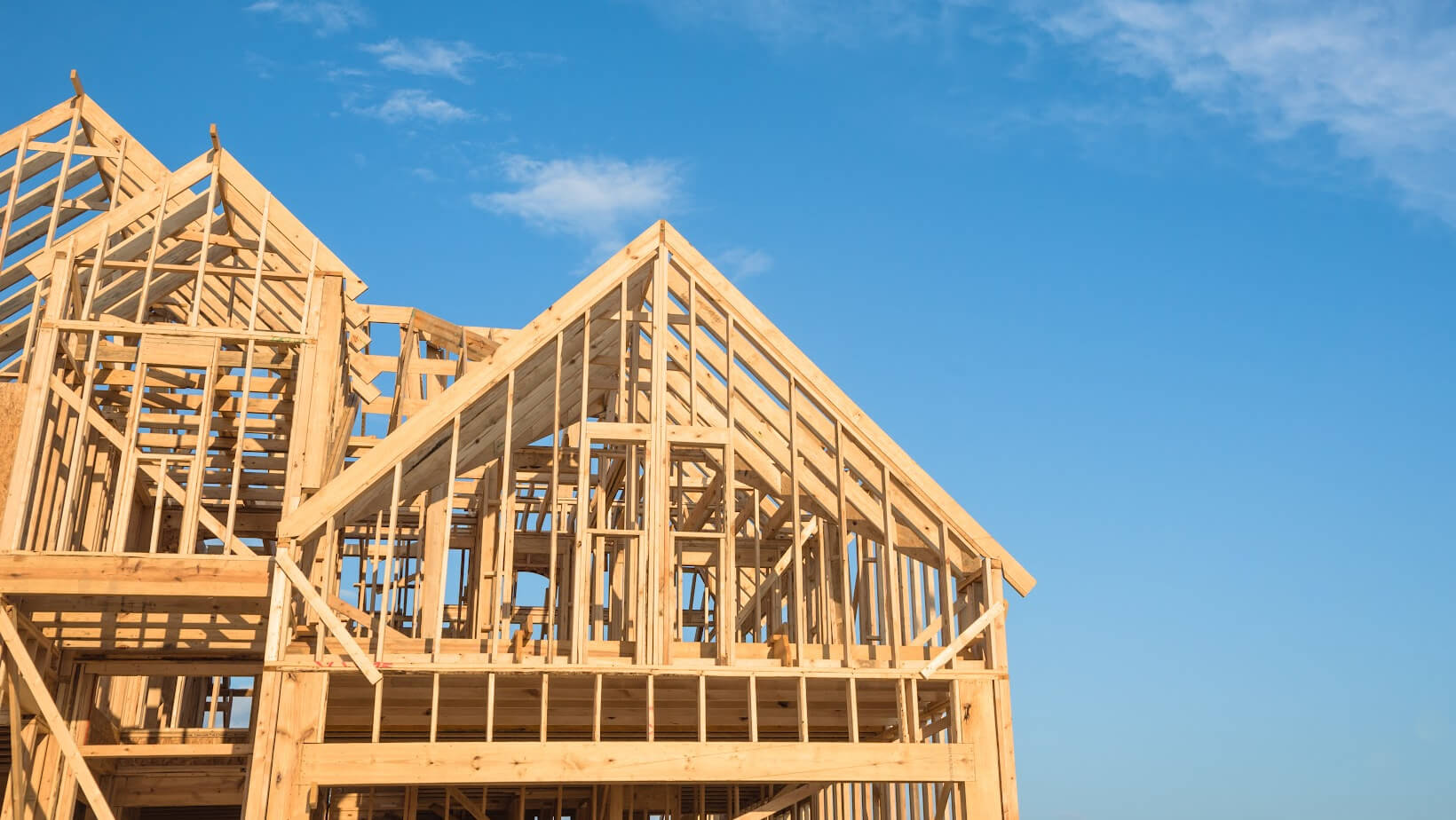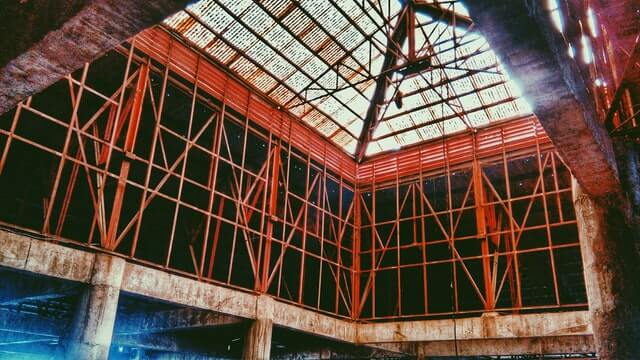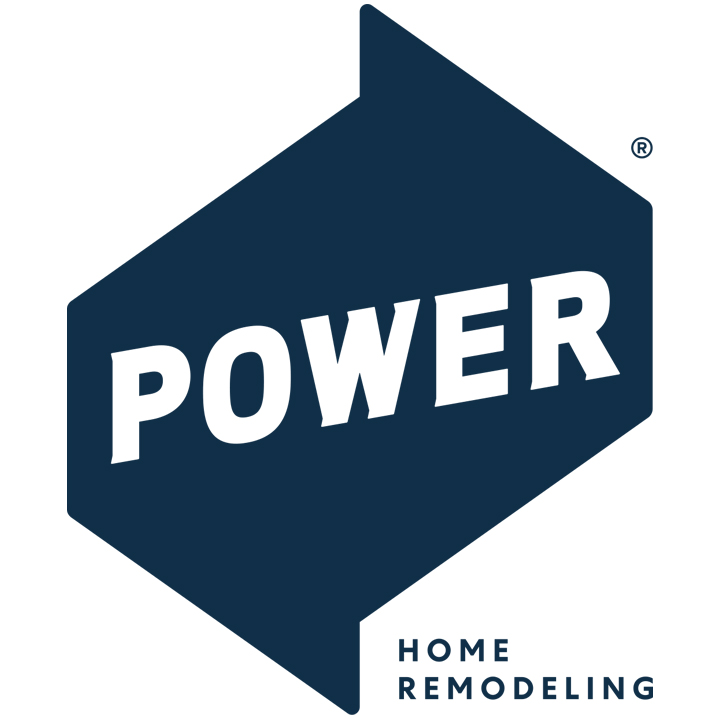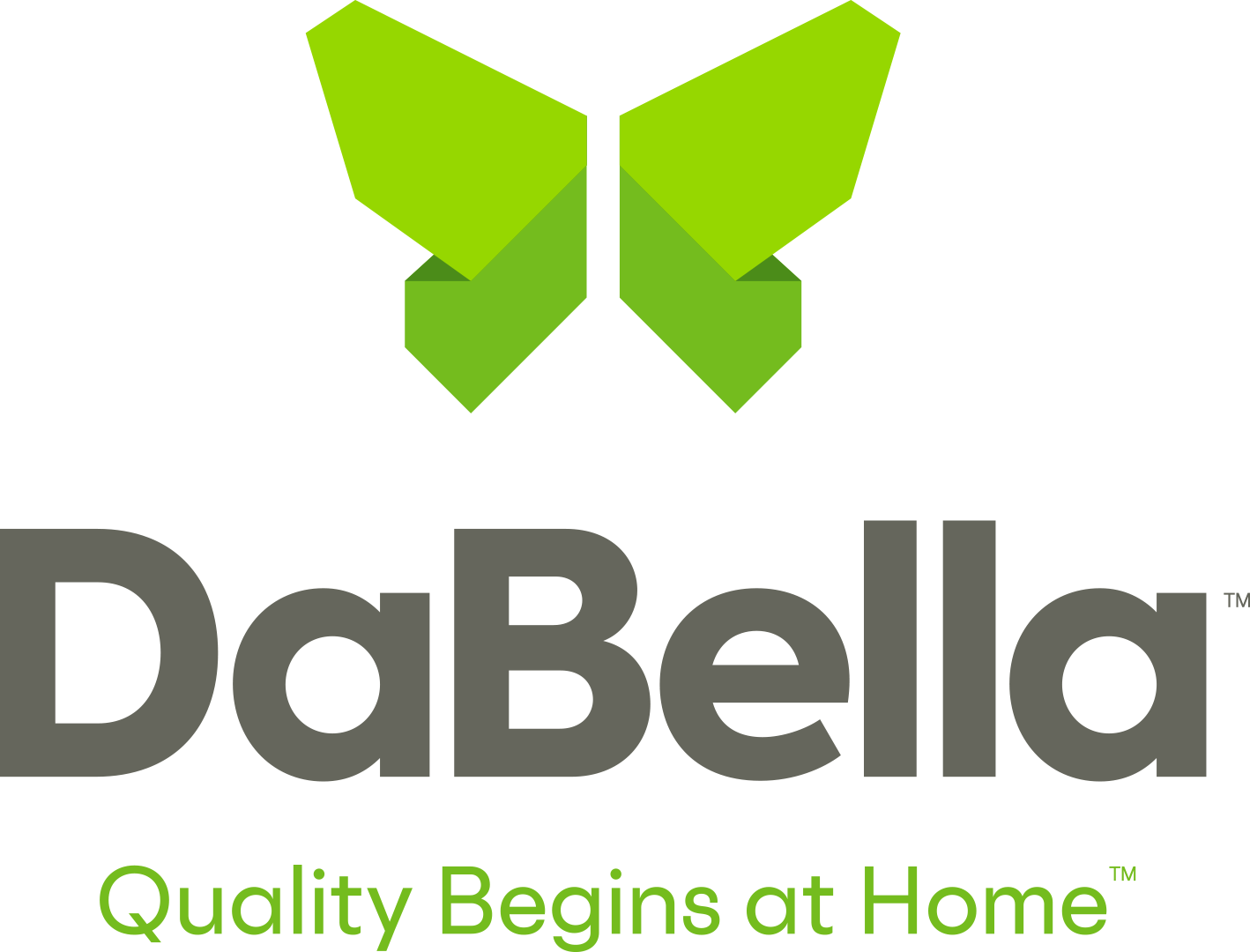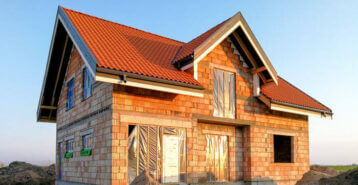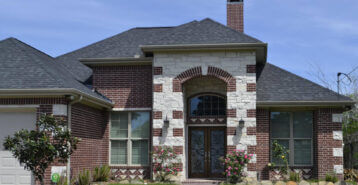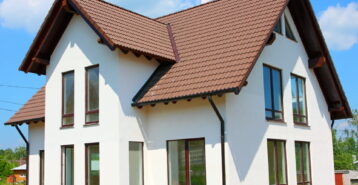When building a home, the roof adorning the building’s frame is like the crown jewel atop your own personal castle. A roof’s setup can prepare homeowners either for success or years of upkeep and maintenance. That is why it is so important to understand what goes into the roof framing process.
Still, learning the ropes can be intimidating — from bearers and barges to joists and rafters, sometimes it is difficult to figure out where to begin with it all. Even when you have hired a professional contractor, it is critical to understand the roof framing process and steps involved yourself to ensure you know how to identify a proper installation. Modernize is here to help.
What is Roof Framing?
For starters, roof framing is exactly what it sounds like — you or your contractor are setting up the skeleton for the roof that will go on top of your home. As expected, there is a lot of lumber involved.
Roof framing helps designate the shape and aesthetic your completed home will have. For instance, think of how different a building may look if it had a gabled roof versus a flat roof — that is where roof framing plays a hand.
From a practical standpoint, roof framing can dictate not only architectural aesthetics but functionality and price. A flat roof may pool rainwater more than a roof with peaks, but it can also be less expensive than certain gabled roofs.
Once you have settled on what the frame will look like, the roof installation process is pretty straightforward. All of that wood will be measured and cut to spec to include the skeletal shape and supporting pieces. From there, kind of like a jigsaw puzzle, all of the pieces will be assembled and secured into place using wood glue and nails.
Once the roof’s structure is completed, it is time to build it up. That means, it’s time to apply metal flashing on the edges (known as drip edge) to keep water out, along with roofing paper, layers of protection and, of course, your materials and style of choice. Popular roof materials range from shingles and tile to metal and asphalt.
Roof Framing Element Terms
Familiarizing yourself with some of the commonly used language around roofing can be of great benefit when planning your next project. Here are some of the most common terms to know.
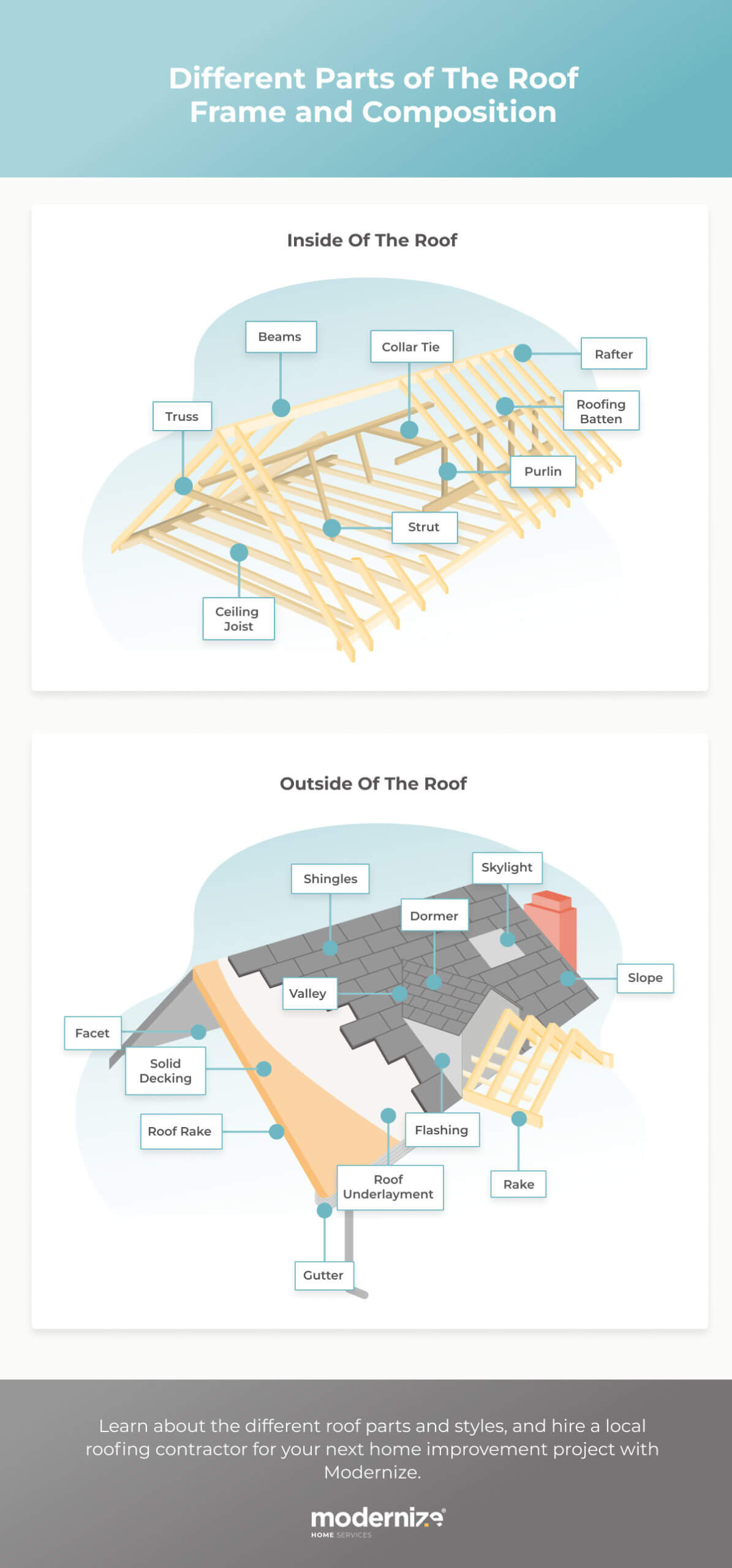
- Beams (hanging, ridge): There are two common types of beams—hanging and ridge. Hanging beams are located perpendicular to ceiling joists and directly above them, with the intent of reducing the span of the ceiling joists. A ridge beam supports the ends of the rafters at the ridge, transferring the load to posts or gable end walls.
- Boards (barges, fascia): Barge boards run diagonally and are located at the gable end of a house. Fascia boards run horizontally, carry the gutters, and support the bottom row of roof tiles.
- Caulk: High-performance, asphalt-based sealant used for sealing roof gaps and joints, spotting shingles, and repairing minor roof leaks.
- Ceiling joist: Horizontal structural components that typically run parallel to the rafters and work to transfer the roof load to the walls and prevent the walls from spreading.
- Collar tie: Tension ties that are used to connect opposing rafters in order to resist rafter separation when the roof is under unbalanced loads, such as wind uplift or snow.
- Deck (top plate, sheathing): A top plate is the horizontal framing that runs along the top of the joists. A sheathing deck is a board that is nailed to rafters, trusses, or roofing joists, protecting them from the elements.
- Dormer: A structure, often containing a window, that extends vertically beyond the plane of a pitched roof.
- Facets: A generalized term used to refer to the different sections or sides of a roof.
- Flashing: A flat and thin material used to prevent water from entering the openings and cracks of a roof.
- Gutters: A system that moves water from your roof away from your home and its foundation.
- Penetration: Any hole in your roof that is made to install a piece of equipment, such as air, combustion, or plumbing vents; skylights; chimneys; and AC units.
- Purlin: Horizontal structural pieces in a roof that span the trusses to provide framing and attach sheathing material.
- Rafter: One of a series of sloped structural pieces (typically wooden beams) that extend from the hip or ridge to the eave, wall plate, or downslope perimeter. They are designed to support the roof deck, shingles, and other roof components.
- Rakes and eaves: The roof rake is the exposed portion on the sides of a gable roof that extends from the eave to the ridge of the sloped sides. An eave is the area where a roof extends slightly past the wall of a building.
- Roof underlayment: The roofing material that lies between the roof decking and shingles.
- Roofing batten: They maintain the roof covering in straight, consistent rows, and provide a strong anchor for the nails or clips used to secure the tiles or slates.
- Shingles: A roof covering consisting of individual overlapping elements that are laid in courses from the bottom edge of the roof up, with each successive course overlapping the joints below. Shingles can come in a variety of materials and styles.
- Soffit bearer: A portion of the roof between the wall and the fascia that functions to allow the soffit lining to be fixed.
- Struts/strutting: A strut is a structural component of a roof truss and is an integral part of the load-bearing, designed to resist longitudinal compression.
- Slope/pitch: Slope is the incline of the roof expressed as a ratio of the vertical rise of the horizontal run, where the run is some portion of the span. Slope is the incline of the roof expressed as a ratio of the vertical rise of the horizontal run, where the run is some portion of the span.
- Skylight: Roof opening covered with translucent or transparent glass or plastic designed to allow daylight into the home.
- Truss: A structural framework designed to provide support for a roof and to bridge the space above a room. They typically occur at regular intervals and are linked by horizontal beams, known as purlins.
- Valley: Junctures in a roof (that resemble mountain valleys) marking a change in the angle or direction of the roof.
- Ventilation: A system of intake and exhaust vents that provide air circulation to keep the atmosphere inside a home comfortable and protect it from moisture.
- Water shield/ice shield: A waterproof membrane used to protect your roof decking from ice and water that can seep under the roofing material and cause damage.
Common Framing Problems and Solving Them
There are a number of common issues and mishaps that builders experience when framing a roof. Most are easy to resolve — or avoidable in the first place — when you work with a trusted, professional contractor.
One easy-to-happen but critical error is when the wood is notched or a hole is cut in the wrong place. Even the slightest mis-measurement can throw things into shambles. That’s because if a hole or notch is in the wrong place, it can hurt the wood’s structural integrity, risking less load-carrying capacity.
There can also be deeper issues if you are adding new roof framing to an existing home.
As home safety codes advance over time and technology changes how homes are built, the roof framing process is bound to be different than it was as recently as a few years ago. Professional contractors are constantly learning and adjusting to meet the latest standards and requirements when it comes to roof framing and more.
All that said, if you are updating your home’s roof layout, or building new construction based on an older plan, there are bound to be complications. That’s because of things like tougher wall bracing requirements. Over time, building codes have gotten more stringent regarding the need for braced wall panels in corners of a home and within a certain amount of feet down a wall’s length.
This can be tricky when wall panels are narrow or if you decide to add a new extension onto your home’s existing structure. Without getting too in-the-weeds, it can make things tricky on your contractor because they have to change nailing patterns and reconfigure how to anchor things down. Modernize recommends working with a trusted local contractor to handle upgrading your home with care.
Finding a Professional Roof Contractor
Framing a roof is not a job for an amateur. Sure, a DIY-er can assist in nailing things into place, but at the end of the day, the planning and framework is a job for a professional.
That’s why it is important to find a roof contractor you can trust — a local professional who can get the job done quickly and right the first time around. When meeting with potential contractors, questions to consider asking ahead of time include:
- What is the average timeline for a project like this?
- How long have you been in business?
- How much experience do you have with roofing repair or installation?
- What is your roof project cost estimate?
- Can you provide a list of references?
- Can you provide proof of insurance for personal liability, worker’s compensation, and property damage coverage?
You can also refer to our checklist for hiring roofing contractors for your projects to help with the process of roof installation or use our roof replacement calculator to breakdown the costs prior to hiring a roofing professional.
Compare top-rated roofing pros in your area.
Read real homeowner reviews, explore qualifications, and view promotions. Modernize makes it easy to browse professionals and find one that will be perfect for your project.
